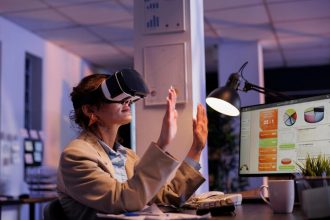In an era defined by technological advancements and rapid innovation, the food industry is no exception to the transformative power of technology. From farm to table, technological developments are reshaping every aspect of the food supply chain, offering new solutions to age-old problems and revolutionizing the way we produce, distribute, and consume food. In this article, we will explore how technology is changing what we eat and discuss the implications of these changes for the future of food.
Agricultural Innovation:
At the heart of the food industry lies agriculture, where technology is playing a pivotal role in boosting efficiency, sustainability, and productivity. The rise of precision agriculture, powered by drones, satellites, and sensors, allows farmers to monitor crop health, optimize irrigation, and apply fertilizers with unprecedented accuracy. By harnessing the power of big data and analytics, farmers can make data-driven decisions that increase yields and reduce environmental impact.
Furthermore, biotechnology is revolutionizing crop breeding and genetic modification, enabling scientists to create crops that are more resilient to pests, diseases, and extreme weather conditions. Genetically modified organisms (GMOs) have sparked debates over their safety and ethical implications, yet they have the potential to address global food security challenges by increasing crop yields and reducing food waste.
Food Production and Processing:
Advancements in food processing technologies are improving the safety, quality, and shelf-life of food products. Novel processing methods, such as high-pressure processing, ultraviolet light treatment, and nanotechnology, are being used to preserve nutrients, enhance flavors, and extend the freshness of perishable goods. Additionally, 3D printing is emerging as a disruptive technology in the food industry, enabling the production of customized foods and intricate designs with precision and efficiency.
Moreover, cultured meat and plant-based alternatives are gaining traction as sustainable and ethical alternatives to traditional animal farming. Companies like Beyond Meat and Impossible Foods are leveraging biotechnology to create realistic meat substitutes that mimic the taste, texture, and nutritional profile of animal-based products. These innovations have the potential to reduce the environmental footprint of conventional livestock farming and address concerns related to animal welfare and public health.
Supply Chain Management:
Technology is revolutionizing the way food is sourced, distributed, and delivered to consumers. Blockchain technology is being adopted to enhance transparency and traceability throughout the supply chain, allowing consumers to track the origins of their food products and verify their authenticity. Smart packaging solutions, equipped with sensors and RFID tags, enable real-time monitoring of product quality, temperature control, and expiration dates, reducing food spoilage and ensuring food safety.
Furthermore, e-commerce platforms and mobile applications are transforming the way consumers shop for groceries and meals. Online grocery delivery services, meal kit subscriptions, and on-demand food delivery apps are providing convenience and accessibility to consumers, enabling them to access a wide variety of food options with the click of a button. These platforms are also leveraging data analytics and machine learning algorithms to personalize recommendations and improve the overall shopping experience.
Consumer Trends and Preferences:
Advances in technology are reshaping consumer behavior and preferences when it comes to food choices. The rise of social media, food blogs, and online review platforms has empowered consumers to discover new food trends, share culinary experiences, and demand transparency from food brands. Personalized nutrition services, based on genetic testing and AI algorithms, are offering tailored dietary recommendations that cater to individual health goals and preferences.
Moreover, virtual reality and augmented reality are being utilized to enhance the sensory experience of food consumption, allowing consumers to visualize, customize, and interact with virtual food products. Smart kitchen appliances and IoT devices are enabling seamless integration between cooking, meal planning, and nutritional tracking, streamlining the cooking process and promoting healthier eating habits.
Challenges and Considerations:
While the integration of technology in the food industry presents numerous benefits and opportunities, it also raises concerns and challenges that must be addressed. Issues related to data privacy, cybersecurity, and ethical implications of gene editing and artificial intelligence require careful consideration and regulatory oversight. Additionally, disparities in access to technology and digital literacy may widen existing inequalities in food access and affordability.
Moreover, the environmental impact of technology-driven food production and distribution systems, such as energy consumption, waste generation, and carbon emissions, must be taken into account to ensure the sustainability of our food systems. Balancing technological innovation with ethical, social, and environmental considerations is crucial to shaping a future of food that is equitable, resilient, and nourishing for all.
In conclusion, the convergence of technology and food is reshaping the way we grow, produce, distribute, and consume food, opening up a world of possibilities and challenges. By harnessing the power of innovation, collaboration, and conscious decision-making, we can create a future of food that is sustainable, diverse, and satisfying for generations to come. As we navigate this ever-evolving landscape, let us embrace the opportunities that technology offers to reimagine our relationship with food and foster a more vibrant and resilient food ecosystem.











